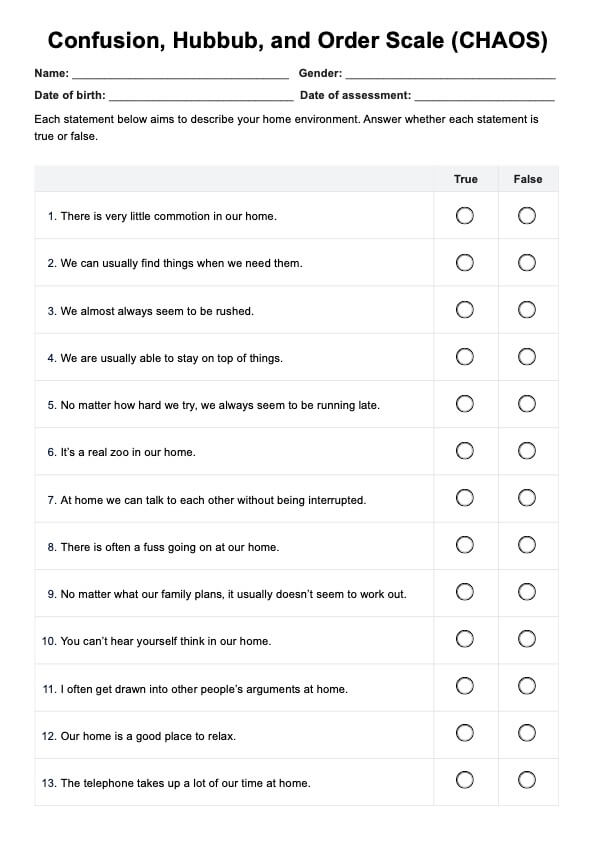The CHAOS Scale is a tool used to assess the level of confusion, disorganization, and noise in a home environment, which can impact health and developmental outcomes. It is commonly used in research and clinical settings to understand the influence of household chaos on well-being.

CHAOS Scale
Learn about the CHAOS scale, including examples and how to use it effectively. Download Carepatron's free PDF guide for reference.
Use Template
CHAOS Scale Template
Commonly asked questions
Aiming for a lower score on the CHAOS Scale is ideal, as it indicates a more orderly and calm home environment. A lower score is associated with reduced stress and better overall health and developmental outcomes.
The CHAOS Scale measures environmental confusion, disorganization, and noise within a household. It captures how these factors contribute to the home's overall sense of order or disorder.
EHR and practice management software
Get started for free
*No credit card required
Free
$0/usd
Unlimited clients
Telehealth
1GB of storage
Client portal text
Automated billing and online payments











